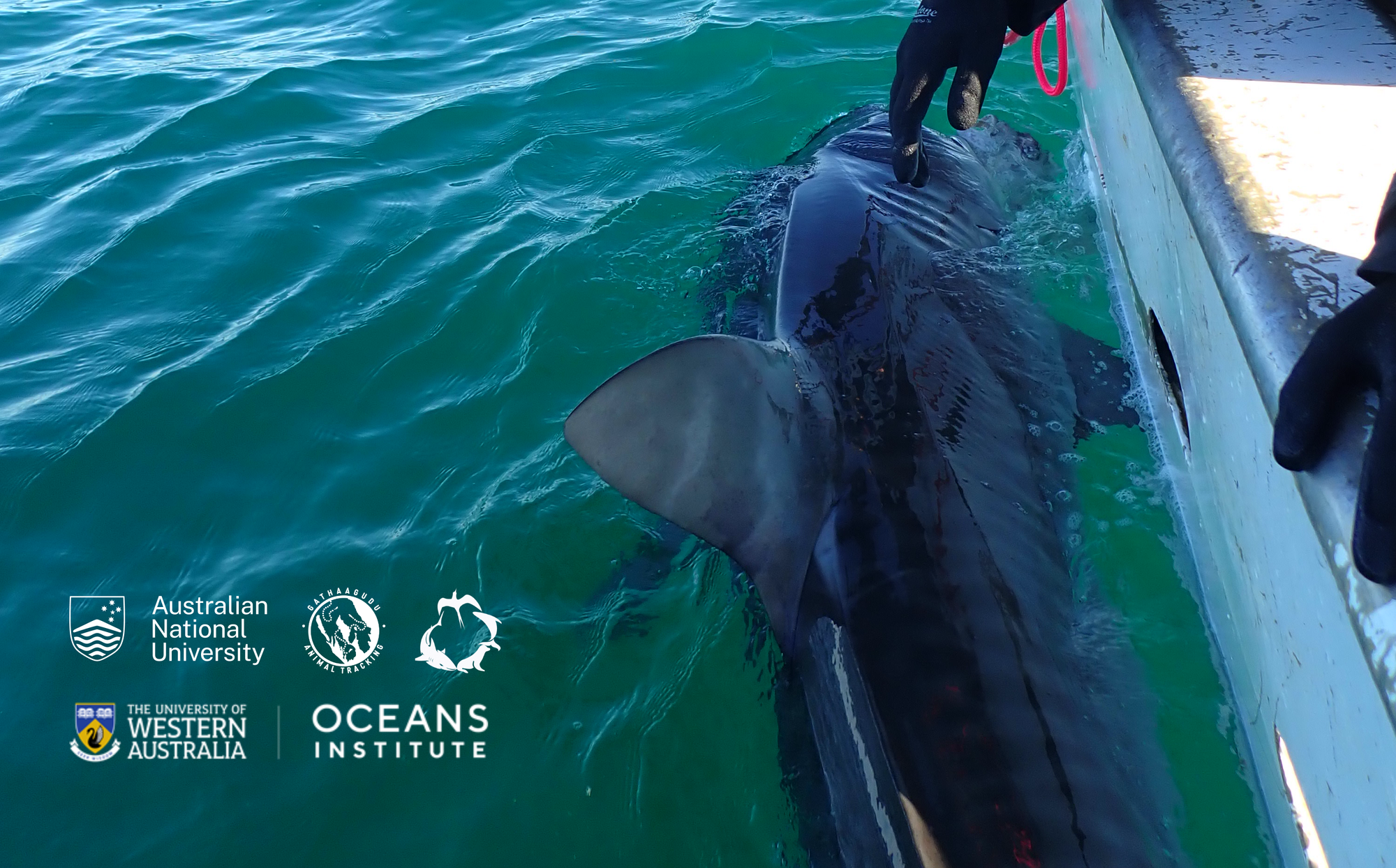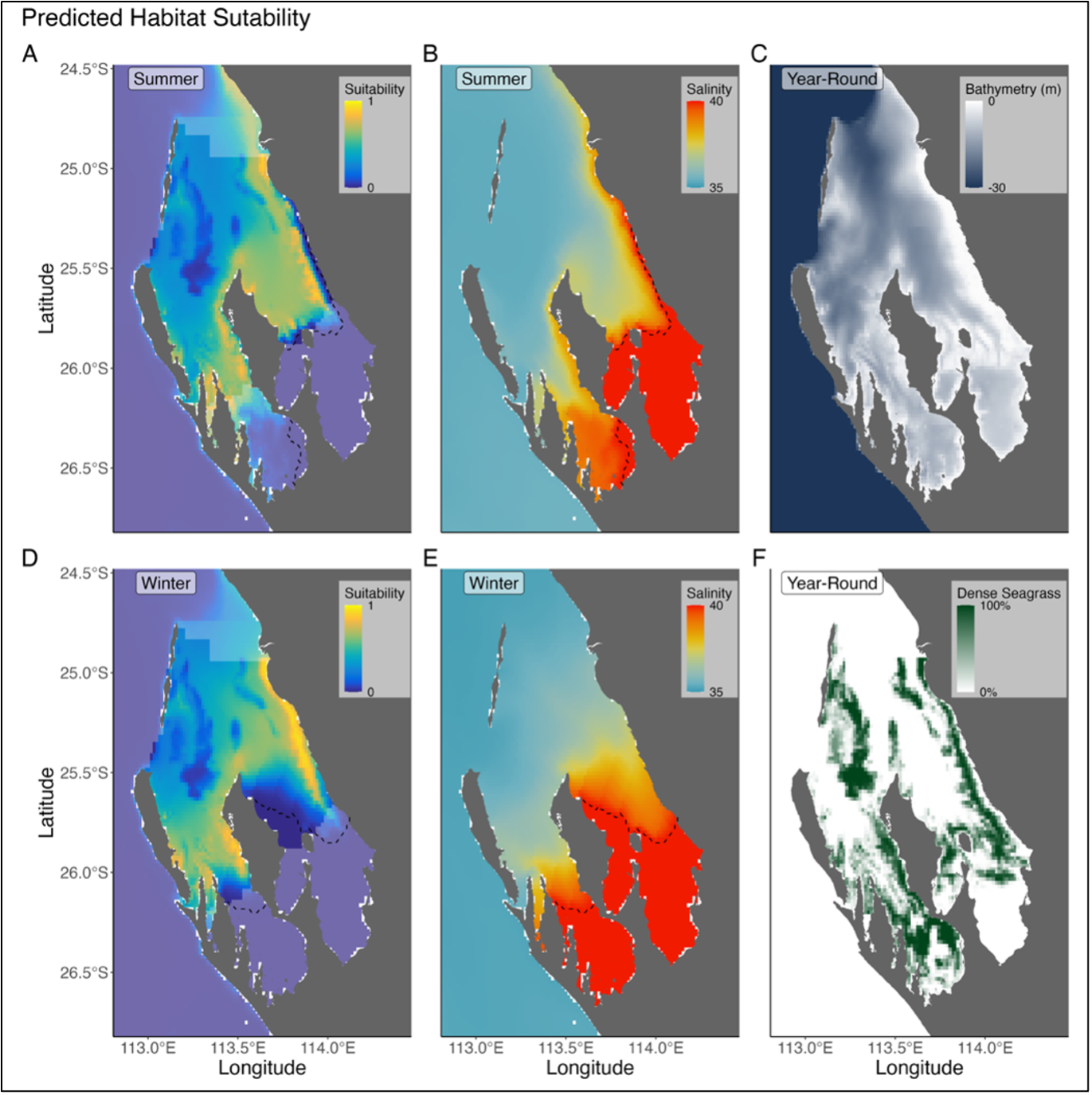Newly Published: Salinity drives the distribution of a top-order predator in an inverse estuary
Ben D’Antonio publishes his final PhD chapter on hypersalinity's impact on tiger sharks, marking a strong contribution to the lab’s GAT project and our research into tiger sharks in that region.

The Sequeira Lab PhD student Ben D’Antonio celebrates the publication of his third and final PhD chapter in the journal Scientific Reports!
The research paper “Salinity drives the distribution of a top-order predator, the tiger shark (Galeocerdo cuvier), in an inverse estuary,” led by Ben is co-authored by Mark Meekan, Luciana C. Ferreira, Michael D. Taylor, Charitha Pattiaratchi, and our lab lead Ana Sequeira, as senior author.
The main aim of the research was to reveal the dynamic oceanographic processes that drive suitable habitat for tiger sharks in the subtropical coastal embayment of Shark Bay in Western Australia. In this paper, Ben used predictive models to generate dynamic habitat suitability maps within the inverse estuarine of Shark Bay, a shallow coastal embayment with salinities consistently above that of the adjacent ocean. You can read the findings of this research here.
This research provides valuable insights into the habitat preferences of tiger sharks, which can inform conservation efforts and management strategies in Shark Bay. This research is embedded in the Gathaagudu Animal Tracking (GAT) project. A big thank you to all collaborators and support from the UWA Oceans Institute, Australian Institute of Marine Science and the Australian National University. And a special thanks to the Jock Clough Marine Foundation and our other philanthropic supporters for funding the GAT project.
And big congratulations to Ben for this great achievement, which marks the end of his PhD journey at UWA!

